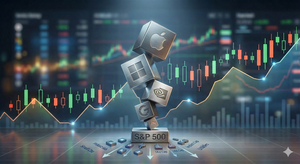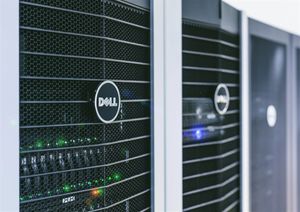Global Markets Defy Gravity: Resilience Amidst Geopolitical Storms and Economic Headwinds

Global stock markets, particularly in major economies, are demonstrating a remarkable and almost counter-intuitive resilience, consistently reaching new highs despite a landscape fraught with geopolitical tensions and domestic economic uncertainties. This phenomenon challenges conventional wisdom, as investors appear to be shrugging off significant risks, including an escalating "chip war" and a recent, impactful US government shutdown that created a significant data vacuum. The immediate implication is a complex market environment where underlying strengths and investor confidence are outweighing tangible threats, presenting both opportunities and perplexing questions for market analysts and investors alike.
Navigating the Tempest: The Chip War and a Data-Darkened Economy
The current market environment is characterized by two prominent headwinds: the ongoing "chip war" and a recent US government shutdown. The "chip war," primarily a strategic competition between the United States and China, has intensified over the past few years, with both nations imposing export controls and sanctions on advanced semiconductor technology. This struggle, aiming to control the future of high-tech industries, involves key players like the US Department of Commerce and Chinese technology giants. Its timeline has seen a series of escalating measures, from initial restrictions on specific companies like Huawei to broader export controls on advanced AI chips and manufacturing equipment. Initial market reactions were mixed; while some semiconductor companies faced immediate pressure due to supply chain disruptions and restricted access to markets, others, particularly those focused on domestic production or less restricted technologies, have shown surprising robustness.
Adding to this complexity was a recent US government shutdown, which, while resolved, cast a shadow over economic data. The shutdown, which occurred between September 20th and October 1st, 2025, resulted from a deadlock over budget appropriations. During this period, numerous government agencies ceased non-essential operations, leading to a "data vacuum" where crucial economic indicators—such as inflation reports, employment figures, and manufacturing data—were delayed or simply not released. This lack of transparent, real-time economic information typically creates uncertainty and can spook markets. However, in this instance, markets largely maintained their upward trajectory, suggesting that investors either anticipated a swift resolution or were looking past short-term data disruptions, focusing instead on broader economic narratives and corporate earnings.
Corporate Fortunes: Winners and Losers in a Volatile Landscape
The "chip war" has created a distinct set of winners and losers. On the winning side, companies with diversified manufacturing capabilities or those benefiting from government subsidies aimed at bolstering domestic semiconductor production are thriving. For instance, Taiwan Semiconductor Manufacturing Company (TSM) (NYSE: TSM), despite its geopolitical exposure, has continued to be a critical supplier, benefiting from global demand and strategic importance. Similarly, US-based equipment manufacturers like Applied Materials Inc. (AMAT) (NASDAQ: AMAT) and Lam Research Corporation (LRCX) (NASDAQ: LRCX) are poised to gain from increased investment in domestic chip fabrication facilities. However, Chinese technology firms heavily reliant on advanced US-origin technology, such as SMIC (0981.HK) (HKEX: 0981), face significant headwinds due to export restrictions, impacting their ability to produce cutting-edge chips and compete globally. Their access to essential equipment and software has been curtailed, forcing them to pivot towards domestic alternatives, which may not yet be on par with global standards.
The US government shutdown, while less directly impactful on specific corporate revenues in the long term, did create short-term operational challenges and uncertainty. Companies heavily reliant on government contracts or regulatory approvals, such as defense contractors like Lockheed Martin Corporation (LMT) (NYSE: LMT) or pharmaceutical companies awaiting FDA clearance, experienced delays. However, the market's overall muted reaction suggests that investors viewed these as temporary disruptions rather than fundamental threats to corporate profitability. Companies with strong balance sheets and diverse revenue streams were better positioned to weather the temporary data vacuum and operational slowdowns, demonstrating their inherent resilience to short-term political instability.
Broader Implications: A New Era of Market Dynamics
The current market resilience, particularly against the backdrop of the "chip war" and the US government shutdown, signals a potentially new phase in market dynamics. This phenomenon fits into broader industry trends where technological innovation, robust corporate earnings, and strong consumer demand in key sectors are providing a powerful counter-narrative to geopolitical risks. The "chip war," while disruptive, is also accelerating technological independence and innovation in various regions, leading to increased investment in R&D and manufacturing. This could, in the long run, create more diversified and resilient global supply chains, albeit at a higher initial cost.
The ripple effects are evident: partners of sanctioned entities are seeking alternative suppliers, while competitors are vying for market share in newly restricted territories. Regulatory and policy implications are significant, with governments worldwide increasingly viewing semiconductor technology as a matter of national security, leading to more interventionist industrial policies. Historically, markets have often reacted sharply to geopolitical tensions and economic data disruptions. For instance, past government shutdowns in the US have typically led to temporary market jitters. However, the current period shows a greater investor willingness to look beyond immediate headlines, perhaps indicating a belief in the underlying strength of corporate fundamentals and a quicker adaptation to evolving geopolitical landscapes. This resilience might also be attributed to the sheer volume of global capital seeking returns, pushing valuations higher even in the face of uncertainty.
The Path Forward: Adaptations and Emerging Opportunities
Looking ahead, the short-term outlook suggests continued volatility driven by the evolving "chip war" and potential for future political impasses. However, the long-term possibilities point towards a market that is learning to incorporate geopolitical risk as a persistent factor rather than an anomalous event. Companies will likely need to implement strategic pivots, focusing on supply chain diversification, regional manufacturing hubs, and enhanced cybersecurity measures to mitigate risks associated with technological competition. This could lead to increased capital expenditures in these areas, creating opportunities for industrial and technology firms specializing in automation, logistics, and advanced manufacturing.
Market opportunities may emerge in sectors benefiting from strategic national investments, such as AI, renewable energy, and biotechnology, which often rely on advanced chip technology. Challenges include navigating complex international trade regulations and managing the increased cost of diversifying supply chains. Potential scenarios range from a continued, albeit bumpy, upward trend if geopolitical tensions remain manageable and economic growth persists, to a more significant correction if the "chip war" escalates drastically or if a deeper economic downturn materializes. Investors should prepare for a landscape where resilience is tested, but innovation and adaptability remain key drivers of success.
Market's Unwavering Resolve: A New Investment Paradigm
In wrapping up, the remarkable resilience of global markets in the face of the "chip war" and the US government shutdown offers several key takeaways. Firstly, investor sentiment appears to be prioritizing long-term growth narratives and corporate fundamentals over short-term geopolitical and economic uncertainties. Secondly, the ongoing "chip war" is not merely a disruptive force but also an accelerant for strategic investments in technological independence and innovation across various economies. Finally, the ability of markets to shrug off a data vacuum from a government shutdown highlights a potential shift in how investors perceive and react to political instability.
Moving forward, the market will likely remain a battleground between persistent geopolitical risks and robust corporate earnings. Investors should watch for further developments in the "chip war," particularly new policy announcements from major global powers, and monitor the adaptability of companies in diversifying their supply chains and technological dependencies. The coming months will be crucial in determining whether this current resilience is a temporary anomaly or the hallmark of a new investment paradigm where markets have developed a thicker skin against a perpetually uncertain world. This content is intended for informational purposes only and is not financial advice.
More News
View More




Recent Quotes
View More
Quotes delayed at least 20 minutes.
By accessing this page, you agree to the Privacy Policy and Terms Of Service.